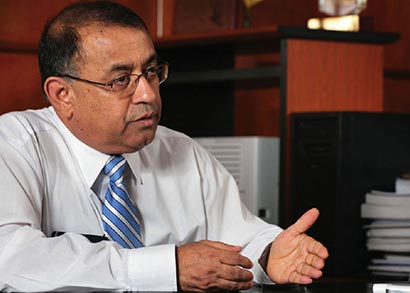Sri Lanka builds up forex reserves with stable currency -finance secretary

Sri Lanka is building up its foreign exchange reserves while keeping its rupee currency stable as the island nation seeing more dollar inflows, Finance Secretary P.B. Jayasundera said on Wednesday.
The central bank has absorbed more than $750 million so far this year due to a rise in inflows from exports, tourism and remittances and has said the local currency would have gained to 125 rupees against the U.S. currency had it not done so.
The rupee ended Wednesday at a one-week closing high of 130.24/26 to the dollar.
“The choice is to let the exchange rate appreciate and enjoy the short-term gain or let the exchange rate remain flexible within a reasonable level,” Jayasundera told a Foreign Correspondents’ Association forum.
“The current inflow situation helps us to build reserves more comfortably while keeping the exchange rate stable. Technically speaking you have the luxury to allow the exchange rate to appreciate. We don’t want that to happen.”
Sri Lanka’s foreign exchange reserves stood at $8.8 billion by the end of May, adequate to finance 5.9 months of imports, the central bank’s latest data showed.
Jayasundera, the top technocrat in President Mahinda Rajapaksa’s government and also treasury secretary, said the target was to build the reserves to $10 billion “as early as possible”.
The central bank has been absorbing dollars amid lack of strong import demand and private sector credit growth.
Private sector credit growth hit a more than 4-1/2-year low of 2.2 percent in May on the year, compared to 3.3 percent a month ago, while May imports fell 17.6 percent on the year, to $1.28 billion.
Many analysts attribute the lower demand to lack of business confidence in the $67-billion economy.
But Jayasundera said the lack of credit demand was due to many sectors having become “cash rich”, with increasing import substitution having curtailed imports.
Sri Lanka has been maintaining key policy rates at multi year lows since January. The repurchase rate and reverse repurchase rate were at 6.5 percent and 8.00 percent, respectively and the central bank cut the repurchase rate by 125 basis points and the reverse repurchase rate by 175 bps between December 2012 and January 2014 to stimulate growth.
Asked if Sri Lanka’s policy rates were appropriate at the moment he said there was room for a further cut in rates, given lower inflation of “below 5 percent”.
“But we don’t want crash landing. With this window, let’s use it to build reserves and savings instead of making too much credit cheap. Because there is no serious credit demand.”
He also said the country would achieve its 7.8 percent economic growth target and a budget deficit goal of 5.2 percent of GDP, despite a lengthy drought whose impact would be more than compensated by expansion in other sectors. (Reuters)
Latest Headlines in Sri Lanka
- Iran rescues 21 Sri Lankan crewmen from sinking tanker in Gulf of Oman April 17, 2024
- Sri Lanka consults IMF after rejecting debt restructure proposal April 17, 2024
- Sri Lankan Fishermen released from Myanmar Prison under General Amnesty April 17, 2024
- ADB urges Sri Lanka to address gender inequality to boost economic growth April 17, 2024
- Sri Lanka launched eVisa system for tourists from today April 17, 2024


